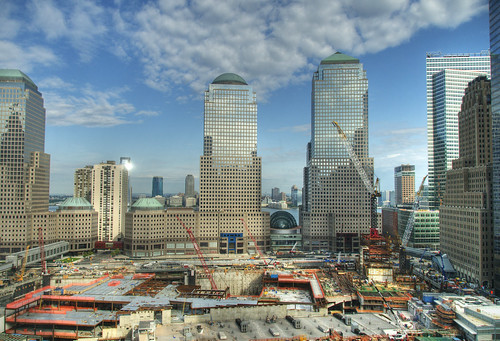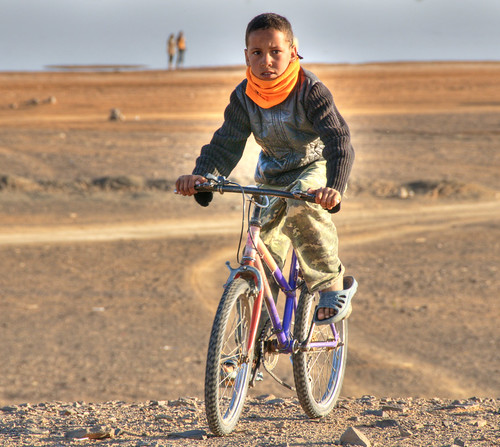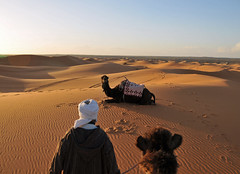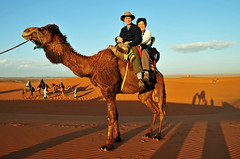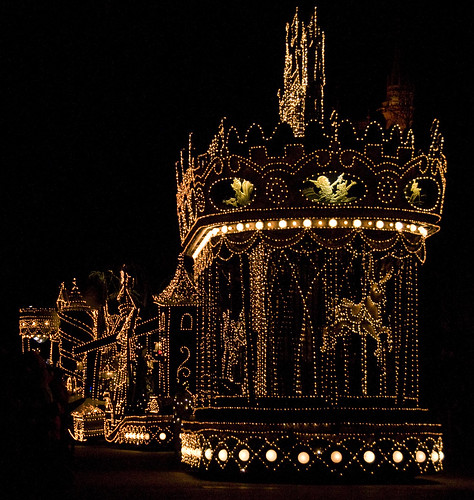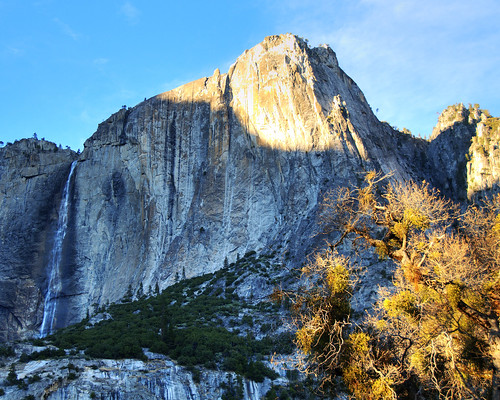
This young man graciously agreed to help me get my lighting set up for photographing kids at our annual Christmas party. He's the son of one of my co-workers.
Near Infrared and Normal Human Vision Photography from Near and Far

Courthouse Butte is south of Sedona, Arizona on SR 179 as you enter Sedona from the south (from Phoenix). Today, the day started with not a cloud in the sky and by late morning, the first winter storm of the season had rolled in. Several hours later, the skyline was gone and it was snowing. This shot is an infrared shot taken with my newly converted Nikon D70. Most of my infrared shots were taken with an infrared filter on the outside of the camera, with an IR conversion the filter is placed inside the camera near the sensor. This allows for being able to preview the shot through the lens and allows more light in (therefore allowing more flexibility with aperture and shutter speed). This was shot at f16, 1/200sec, ISO 200.
Hi, I'm called a common raven, but I really don't view myself as particularly common. For instance, look how I managed to line myself up so nicely for this shot with the moon in the background. And I did serve as an extra in Ken Burn's National Park film, don't you recognize me?
I'm here to be your guide to travel to the Grand Canyon National Park. I only hang around on the South Rim, but I can give you some advice. First of all, avoid summer travel because it's really hot then-- and in the winter there's snow so you may not be able to get here. April-May and Sept-Early Nov are nice. If you can, stay inside the park. Outside the park are a bunch of chain motels, pizza places, and an IMAX theater, but is that really why you came to the Grand Canyon. There's a list of park lodges at Grand Canyon Lodges.
My first choice is the Kachina Lodge-- basic accommodations, but killer views of the rim. After that, there's the El Tovar Hotel which is an historic landmark and a classic, beautiful national park lodge. Few of the rooms have a view of the canyon though. After that, my next choice would be the Bright Angel Cabins. They're very basic- but also right on the rim but also few with views- if you reserve enough in advance you can get one of the prime cabins with a rim view. After that, would be the Maswik Lodge, on the other side of the tracks (literally) but still an easy walk to the rim. Last choice would be the Yavapai Lodge-- very Motel 6, but still within the park. Everything is easy to get to because there's a shuttle bus system in season and you can drive in your own car from December through late spring. Well, enough on lodging, more on scenic spots in another post.
Most lenses sold these days are zoom lenses-- they zoom in and out so that you can compose your shot without even moving your feet. They are convenient (especially when you can't move closer to a subject because of a barrier, distance or perhaps it's a bear that you don't want want to get too cozy with). Prime lenses are for only one focal distance. The advantage of prime lenses are that the optics are designed exactly for that focal distance, while a zoom lens needs to have the "flexibility" for a wide range of focal distances but with a trade off of being less sharpness, especially at the extremes. The prime lens will give you a sharper picture, but you have to use your feet to zoom.
This week PBS is running the Ken Burns' film, The National Parks: America's Best Idea. So far, it's a beautiful series showing the history of the national parks in an historical context. It has wonderful music and provides images of a broad cross section of America's national parks.
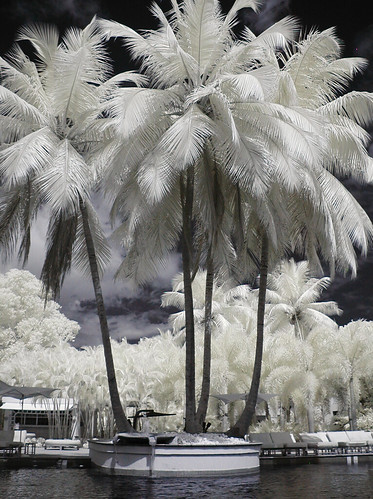
Infrared photography done in good light provides for sharp contrasts and all the shades of gray in between very black and very white. Palm trees are the perfect subject with IR because of the intersting textures and angles. These shots Palm Bouquet and Languor were taken at the El San Juan Hotel in Isla Verde (outside of San Juan), Puerto Rico with an Olympus 2000Z and a Hoya R72 infrared filter.
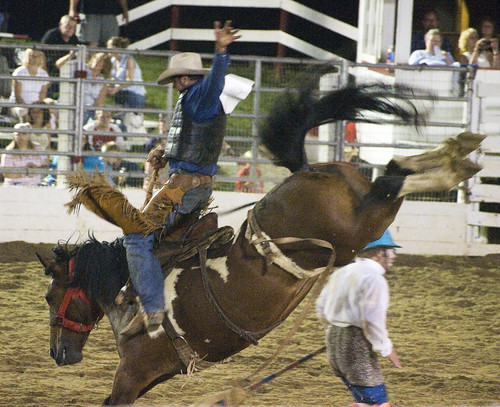
Here's pics from the Cowtown Rodeo in Pilesgrove, NJ. The rodeo was quite an experience for lots of reasons and certainly you should visit a rodeo at least once in your lifetime-- a bucket list item?. The photography was tricky because I was pretty far back and had to shoot over a fence with only the available lighting of the stadium lights. This photo was shot at 1/320, f4.5, 200 mm at ISO 3200. The high ISO is what gives it the grainy look which I'm pretending is an "old west" effect.

Seen at the Cowtown Rodeo in Jersey, these sponsors made me wonder a little. I guess if your name is George Sparks (click here for the photo on Flickr to see the full width of the photo) you would of course become an electrician and the rhino linings are for trucks and have nothing to do with the zoo. The M&S Pet Removal business, offering "Private Cremations" surprised me, seems like a bit of a niche business to be advertising in an arena.
Here we are on the Great Wall in the Mutinayu section, about 50 miles north of Beijing but obviously not out of the pollution that surrounds the area. There's only been one day of blue sky in our week here. We only hiked a short segment because of the elevation, bad air quality, and 90 degree heat/ 90% humidity, but it was amazing to see.
This photo at the entrance of the "Gate of Heavenly Peace" (translated means Tiananmen" is at the northern end of Tiananmen Square and leads into the Forbidden City. Everywhere we go, there appears to be conflict between the old China, both imperial and communist times, and the more westernized modern "hip" China of electronics stores and nightclubs that appears to be their future. Yesterday, we were still among the very few Westerners we saw and a number of people stopped us to ask to have their pictures taken with us.
Senior citizens here are mostly quite active. Tai chi in the park, walking, etc. This photo was taken yesterday while there was still sky to see before the smog rolled back in.
Here is one (and probably the cutest) of the 13 million residents of Beijing. We're quite an oddity here and get a lot of stares, especially in the part of town where the conference was and there weren't many tourists. Adults and children alike stare because we're not part of a tour group and so are unexpected. We've been stopped by a couple of "unofficial" sorts to inquire what we're up to.
Finally, the conference is over and the sun is out. It's a beautiful sunny day in Beijing. This photo is from a park on the way from the hotel to the Forbidden City. We walked to the gates of the Forbidden City and then were intimidated by the masses of weekend crowd, so will defer until tomorrow.
This is "The Cube", the place where Michael Phillips won all his medals. From the outside, it looks as if the wall itself is filled with water, but it is an illusion. By the way, Facebook is blocked here, so the only way I can post is put a photo on Flickr, blog it to blogspot (which is also blocked), and blogspot automatically transfers to my Facebook I'm assuming). Also, for some reason the Philadelphia Inquirer is blocked (but not the New York Times). The first day here, he went to the convention center next door in a Kafkaesque experience to register for the conference. The building was filled with a convention of magicians so everywhere we went we asked "Medical?" and we were told "Magic, yes". Now, I know doctors are sometimes thought to do magic, but this was a bit odd. Every hallway we were sent down had people doing magic tricks-- rabbits from hats, disappearing coins, etc.. Apparently a national obsession here in China right now. Jet lagged as we were, we kept trudging along, but the trick was on us, because our conference was actually in a different conference center across the park, where indeed there was little magic happening.
This is the National Outdoor Stadium, aka the "Bird's Nest" on the Olympic Green in Beijing, China. You might be able to tell about the incredible amount of haze from the sky from the smog. I've only been able to make out the sun once briefly at noon. It made it almost impossible to get any daytime shots. For this evening, I loaded up my equipment (the conference and our hotel is across the street from the Olympic complex) to go take some night shots and arrived only to have them turn all the lights off at 10:00. So this shot was made with reflected light from the security lights, on a tripod with exposure of 0.5 sec, f 4.5.
Count the number of cat statues in this shot from Eastern State Penitentiary. The cat statues depict the semi-feral cats who roamed ESP during the time that the prison was closed and then re-opened. A volunteer visited several times a week to feed them and check on them. (There are 4 - click here to go to Flickr and see where they are)
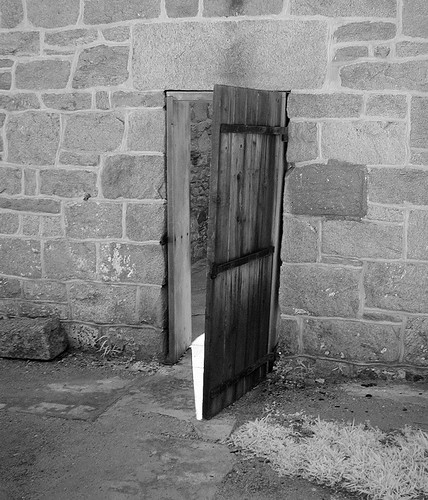
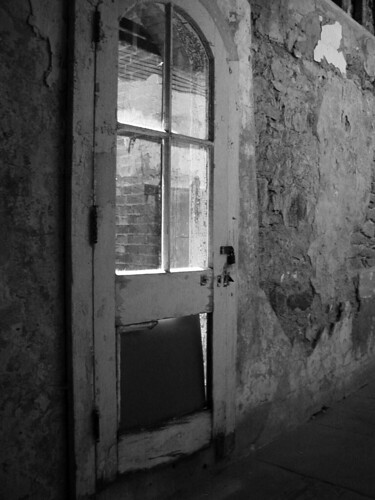
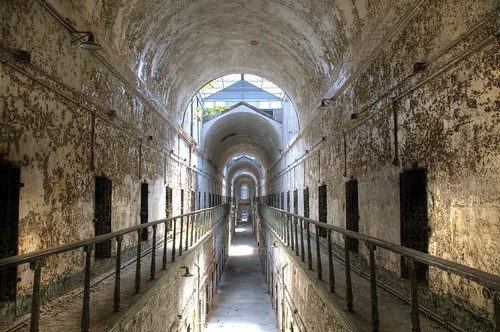
This photo in Norwich, New York (my hometown) is another demonstration of the surreal nature of infrared photography. The shot is in the park at the corner of Broad and East Main Street and at first glance looks like winter and a fresh fallen snow. On closer look however, the people on the bench are dressed in shorts and you can see the texture of grass in the "snow". This shot was at noon with the light bright enough to still show detail in the shadows with the sun directly overhead. The IR filter decreases the amount of available light by filtering out non-IR light, so capturing detail in shadow can be difficult. Taken with an Olympus 2000 Zoom, f 2.0, 1/100 sec with an R72 infrared filter, hand held.
Shooting up from a low position can make a photo that has lines that are already fairly imposing appear even more so. For this shot, I sat on the grass and shot up (and got lucky when the cloud positioned itself just right). The wide angle of this shot adds a little bit of curative to the edges that additionally makes the shot more interesting. Shot with a Nikon D300 f11, 1/500 at 18 mm.
